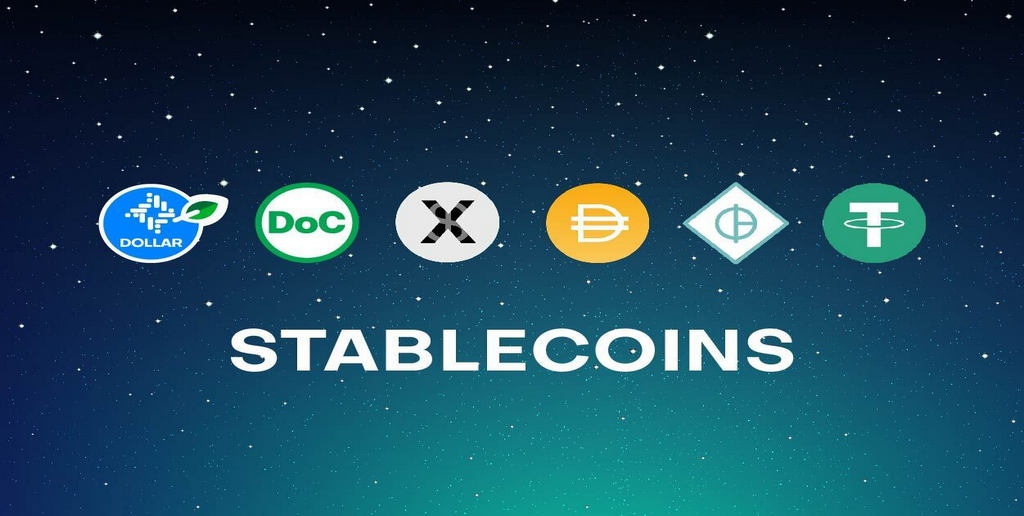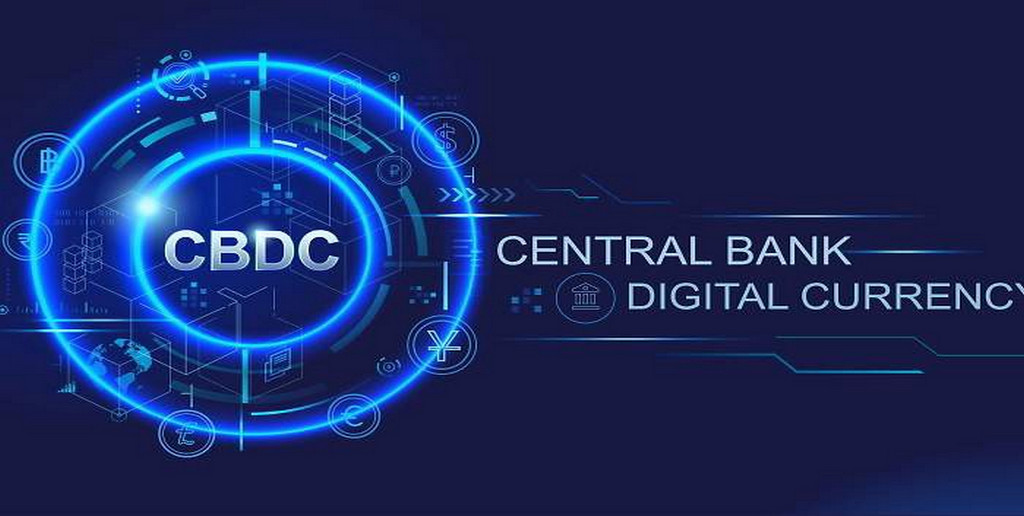What is a Stablecoin?
-
 by ZKE Research
by ZKE Research
One of the main arguments raised by cryptocurrencies skeptics is that they are way too volatile to fulfil what we have learned is a key function of money. Acting as a medium of exchange to buy and sell things, and a unit of account – a benchmark for pricing. That’s exactly where Stablecoins come in.

Stablecoins combine the best of both worlds. The stability of fiat with the borderless, peer-to-peer nature of cryptocurrencies and full transparency over their supply.
This combination puts Stablecoins in the unique position of creating a bridge between cryptocurrencies and the traditional economy.
Borrowing elements of Stablecoin design, several countries, through their central banks, are planning to create digital versions of their currencies called Central Bank Digital Currencies.
CBDCs are no panacea for the ills of Fiat Money, as they will inherit the main weakness of their analogue versions – the absence of any cap on supply.
What is a Stablecoin?
Stablecoins are a type of cryptocurrency that try to solve the volatility problem inherent to Bitcoin and other cryptocurrencies. The clue is in their name: stability is an essential characteristic of any currency that we would want to use on a daily basis.
They do this by tracking the value of a given fiat currency on a 1:1 ratio, and can be denominated in any national currency. This means that a stablecoin is only as stable as the underlying currency it represents and the mechanism used to maintain the relationship.
By far the most common denomination of stablecoin is the US Dollar. The first and still the biggest stablecoin by market cap today is Tether (USDT), launched in 2014.
Since then, a myriad other stablecoins followed suit, including stablecoins based on the Euro, British Pound, Australian Dollar, and even more volatile currencies like the Brazilian Real.
Why are stablecoins useful?
Bitcoin is volatile. It has been known to change by as much as 80% in a single day, the same with other cryptocurrencies. Let’s use an example to understand the problem this would create if the everyday purchases you normally make in Euros were also priced in bitcoin.
If you switched to buying your €3 coffee in bitcoin every morning then its price would be constantly changing. Somedays cheaper, somedays way more expensive – relative to euros.
The long term movement might be up – making your coffee relatively cheaper over time – but this doesn’t help consumers or businesses who need to budget on a day-to-day basis, for which stability is essential.
The situation gets even more unmanageable for rare or one-off purchases of high value goods. Imagine buying a €500,000 house – with the relative cost in bitcoin constantly changing you’ll be glued to price charts desperately trying to time the transaction favourably.
The net result from this uncertainty would be reduced economic activity. It comes down to human psychology — people are less willing to spend an asset if they expect it to increase in value, while they’ll quickly spend a currency that is rapidly declining in value.
Economies thrive on certainty and struggle in volatile conditions, such an unstable currency. In fact one of the main of objectives of Central Banks like the Federal Reserve is to maintain price stability.
Imagine you are the owner of the coffee shop taking BTC payments. What happens if the price crashes just before you pay your employees? Their wages are still denominated in euros. Would you take that chance?
That’s why most people would be unwilling to spend bitcoin, and most merchants would not take bitcoin as payment today. Fiat currencies are just more predictable.
On the flip side, fiat currencies have problems of their own, as we’ve seen in earlier articles.
- Money deposited with a bank is no longer in your control, your card can be frozen, your account blocked.
- If you want to send money to your family in another country you may have to pay hefty sums and delays of several days.
- If you live in a country suffering from hyperinflation. you might not have access to a solid fiat currency.
- The boiling frog problem means your savings are gradually eroded because Fiat isn’t a good store of value.
That’s where Stablecoins come in. By combining the stability of fiat denominations with the decentralised, global nature of cryptocurrencies, Stablecoins can be immensely useful for integrating and expanding the reach of the global economy.
How do Stablecoins work?
Under the hood, stablecoins are entries on global shared digital ledgers that can be transacted on decentralised, peer-to-peer global networks – just like any other cryptocurrency.
Most Stablecoins don’t run their own networks. Instead, they run on top of established blockchains, such as Ethereum or Binance Chain. This enables Stablecoins to be launched without the complexity of starting a network from scratch. Trading an Ethereum-based Stablecoin, for example, is no different than trading Ether itself
But the key property of a Stablecoin is, of course, stability. Different stablecoins use different approaches to achieve stability, falling into the following broad categories:
- Fiat collateral-based
- Crypto collateral-based
- Algorithmic-based seigniorage
- Central Bank Digital Currencies (CBDCs)
Each approach has their own pros and cons. Let’s take a brief look at each approach and how they work.
Fiat collateral-based Stablecoins
This is the most intuitive and straightforward way to achieve stability. It was the first model to be used, and it’s by far and large the most prevalent today.
Fiat collateral-based stablecoins are issued by companies on-chain against corresponding bank deposits in fiat currency (collateral) – usually redeemable on a 1:1 basis at the issuing company.
This means that each unit of this type of stablecoin is just a representation of an existing unit of fiat currency in its issuer’s bank account.
For example, for each unit of Tether (the currency) in circulation, there is a corresponding US dollar in Tether’s (the company) account.
Supply is determined by the amount of collateral held by the company. The issuance of new units requires new money to be deposited by the company, or by a customer. Conversely, redeeming stablecoins for fiat lead to reduced supply.
It’s worth noting that this type of relationship can be extended to collateral other than money – commodities (like gold or silver) and even more complex financial products can (and have started to) be “tokenised” this way – that is, kept as collateral and released as a token on a blockchain.
Working examples of this approach include Tether, Gemini, Paxos, and TrueUSD (pegged to the US dollar), Digix (backed by gold), and Globcoin (based on a basket of currencies).
| Pros | Cons |
| Reliability: tokens are backed by actual time-tested assets | High trust required on the issuing company to honour redemption |
| High liquidity: most can be directly redeemed | Transparency issues surrounding existing deposits |
| Scalability: the model is easy to replicate with little effort | Financial regulations may change, leading to freezing of funds |
Crypto collateral-based Stablecoins
The growth and consolidation of crypto markets has enabled another class of collateralised stablecoins, based purely on crypto assets.
This approach tries to reduce the reliance on companies and human behaviour, instead using smart contracts to manage stability in the system, This allows for purely on-chain stablecoins based on the value of the underlying cryptocurrency (or cryptocurrencies).
These stablecoins always require over-collateralised deposits in order to ensure that fluctuations in value of the underlying collateral won’t break the peg.
The peg is kept via carefully designed economic incentives, governed by community voting, and protected by an automated liquidation mechanism to keep the system’s value in balance.
Although it requires one to trust the underlying smart contracts, this kind of stablecoin system is designed to run without touching the traditional financial system..
The first and most prominent example of a crypto collateral-based stablecoin is DAI, the brainchild of crypto non-profit MakerDAO.
While at first Ether was the only cryptocurrency accepted as collateral, later iterations implemented a multi-collateral approach – meaning you can deposit many other Ethereum-based tokens as collateral.
| Pros | Cons |
| Crypto-native: the Stablecoin requires no interaction with traditional systems | Novelty: potential bugs in a smart contract may lead to loss of funds |
| Transparency: all transactions happen on-chain, and are auditable by anyone | Cost: over collateralised deposits can be expensive for some |
| Decentralised governance: smart contracts aren’t controlled by a single entity | Catastrophic drop: a black swan sudden collapse of prices may bypass safety liquidation mechanisms |
Algorithmic-based seigniorage Stablecoins
This type of stablecoin tries to mirror the mechanism behind the traditional central bank model, but with smart contracts instead of humans in charge.
These smart contracts aim to adjust the circulating supply based on demand for the currency, Price levels are kept by issuing more tokens when demand is high (via interest-bearing shares), and removing tokens as demand drops via a system of redeemable bonds and automated buybacks.
Unlike collateralised models, there is no underlying asset which can be redeemed or traded. Value derives from the expectation that the system will be able to keep the stablecoin stable.
This is a highly experimental and still largely unproven concept, and its nature has led to legal backlash – with Basis, a now-defunct pioneer, has been shut down due to regulatory concerns.
Currently only a handful of such projects exist, such as Bdollar – and then, with a very limited circulating supply.
| Pros | Cons |
| Solid concept: the mechanisms of seigniorage have been successfully running for centuries in the traditional economy | Novelty: potential bugs in a smart contract may doom the project |
| Crypto-native: the Stablecoin requires no interaction with traditional systems | Attack surface: it’s unclear if the combination of smart contracts and economic incentives could react fast enough in case of a deliberate attack |
| Transparency: all transactions happen on-chain, and are auditable by anyone | Legality: in a sector that already suffers from lack of regulatory clarity, this concept may draw even more backlash |
CBDCs: Central Bank Digital Currencies
As cryptocurrencies prove themselves a viable and efficient alternative to current payment systems, winning over ever more sectors of the economy, it’s only natural that arguably the most powerful player wouldn’t want to be left out: government. That’s where central bank digital currencies come in.
CBDCs are not cryptocurrencies, nor are they Stablecoins – but they include elements of both. They are “stable”, since a CBDC is nothing more than a reengineered form of a national currency that incorporates some of the features that make cryptocurrencies so powerful.
It’s worth mentioning that, apart from a few small scale pilots – particularly in China by the PBOC – no nation has implemented a CBDC yet. Therefore, existing projects vary wildly in form, technology, and monetary structure.

How are CBDCs similar to cryptocurrencies
In many ways, it’s useful to think of CBDCs as a hybrid between Bitcoin and a fiat currency.
The main feature used by most CBDC proposals is the use of a blockchain or other distributed ledger system (DLT) to keep a single ledger of payments and transactions.
The advantage of this is that it enables more efficiency, and allows central banks to use a single ledger to account for money supply. This also reduces central bank reliance on commercial banks to control the issuance of new money into the economy.
How are CBDCs different from cryptocurrencies
Even if each country exploring a CBDC has its own approach, one thing that most governments aren’t particularly known for is for their being keen on giving up control.
Therefore, it’s very likely that most – if not all – CBDCs will be permissioned networks, as opposed to Bitcoin’s open nature.
Transaction validation will probably remain under the control of regulated entities, although it’s unsure if these will include the private sector as well as government.
Finally, also unlike Bitcoin, both money supply and monetary rules will probably remain under full control of the currency’s national – much like fiat currencies today, but allowing for more direct control by the central bank.
However, given the highly experimental (and sometimes secretive) nature of CBDC projects, and given that no central bank digital currency has been rolled out yet, it’s too early to know with any certainty how any of this will play out.
While this happens, stablecoins are doing a very good job of bridging the gap between fiat and crypto.
A stable future
Stablecoins are arguably the fastest-growing type of cryptocurrency today. In 2020 alone, the supply of stablecoins has jumped from $5 billion to $23 billion.
Without this much needed degree of price stability, cryptocurrencies would be hard-pressed to offer more complex financial instruments, such as loans, derivative contracts, or insurance – and thus to become part of our global economy.
All of this is possible today, and an entirely new industry based on cryptocurrencies – DeFi, or Decentralised Finance – is quickly gaining momentum partly enabled by stablecoins.
However, there are still many challenges before a future where cryptocurrencies are mainstream materialises – the most important of which being regulation. The borderless, censorship-resistant nature of cryptocurrencies is frequently at odds with the existing financial framework, and some backlash is to be expected.
That said, whatever the outcome of the clash between technological advances and regulatory efforts, Stablecoins are poised to play a lead role for the foreseeable future.
One of the main arguments raised by cryptocurrencies sk…
